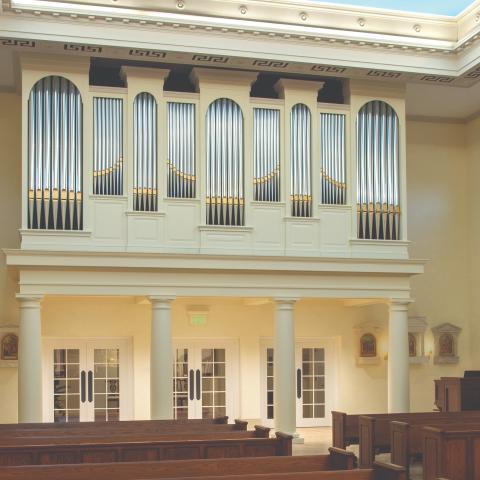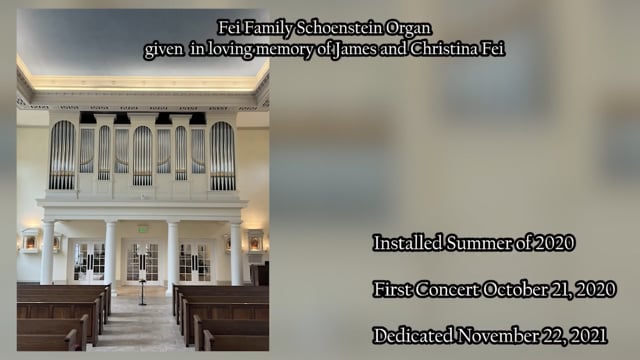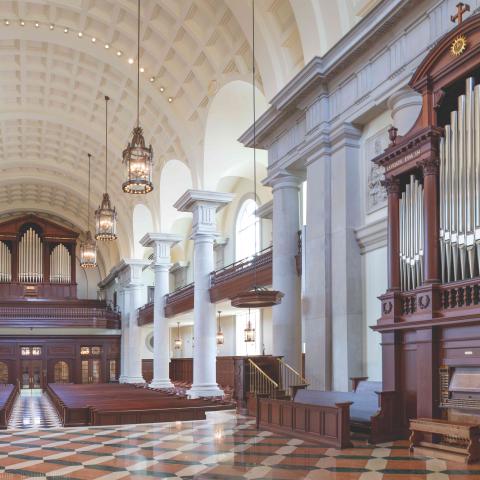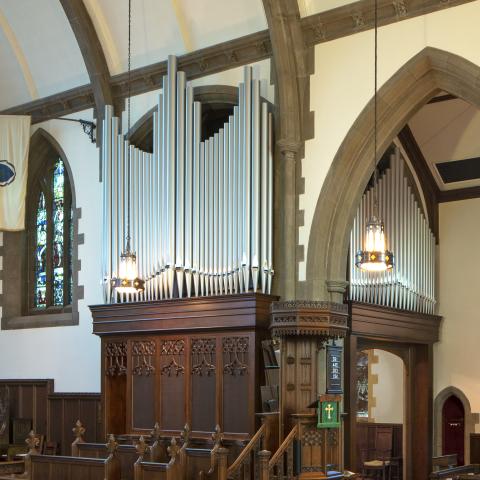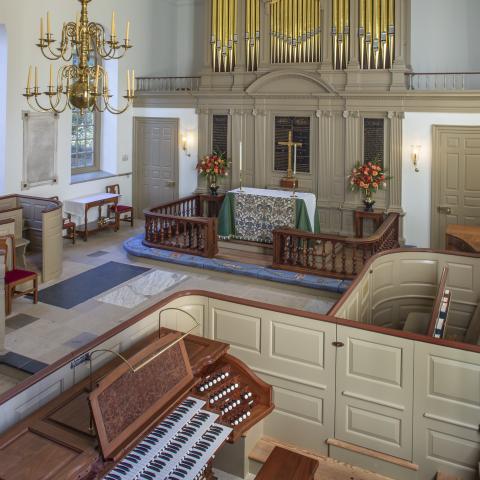
Schoenstein & Co., Benicia, California, is building a new three-manual, 14-voice, 16-rank organ for Bishop Gadsden Episcopal Retirement Community, Charleston, South Carolina. It is in the symphonic style with Great and Swell enclosed and high-pressure stops doubly enclosed within the Swell. The third manual borrows solo and ensemble stops from the Great and Swell.
The resonant chapel is designed in the traditional Southern Colonial style. The instrument will be free standing in a case elevated at the west end. Installation is scheduled for September 2020. Musical advisor and organ consultant for the project is Nigel Potts, canon organist and master of the music, Grace Church Cathedral, Charleston. Cummings & McCrady, Inc., are architects of the chapel.
For information: www.schoenstein.com.

